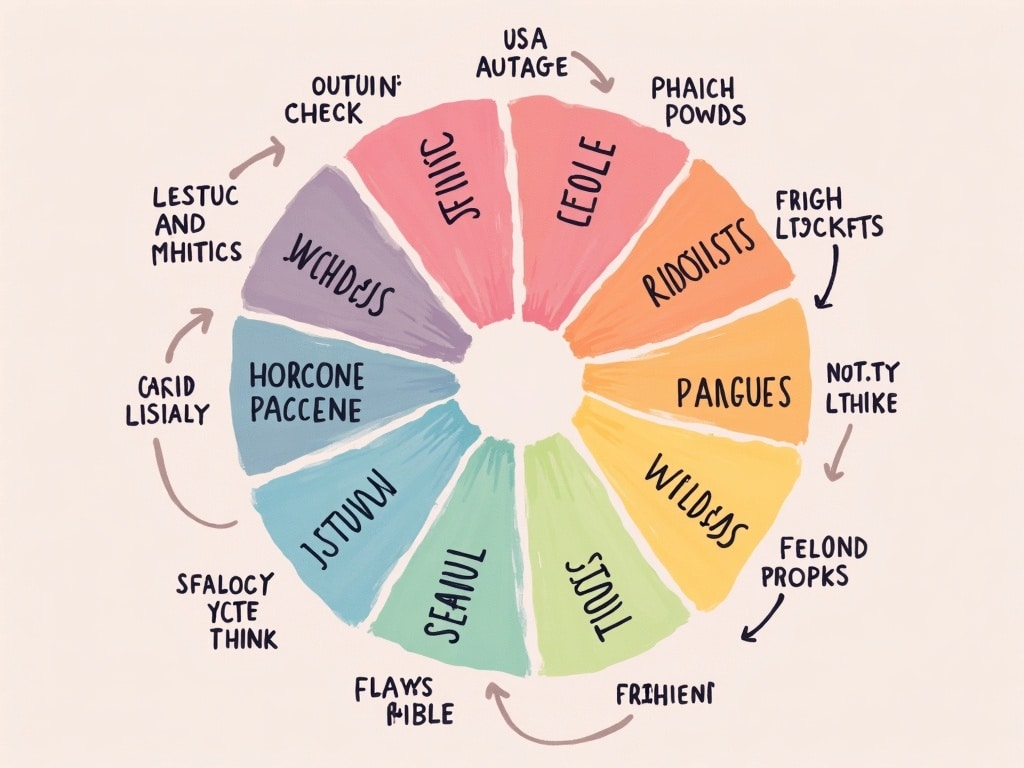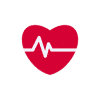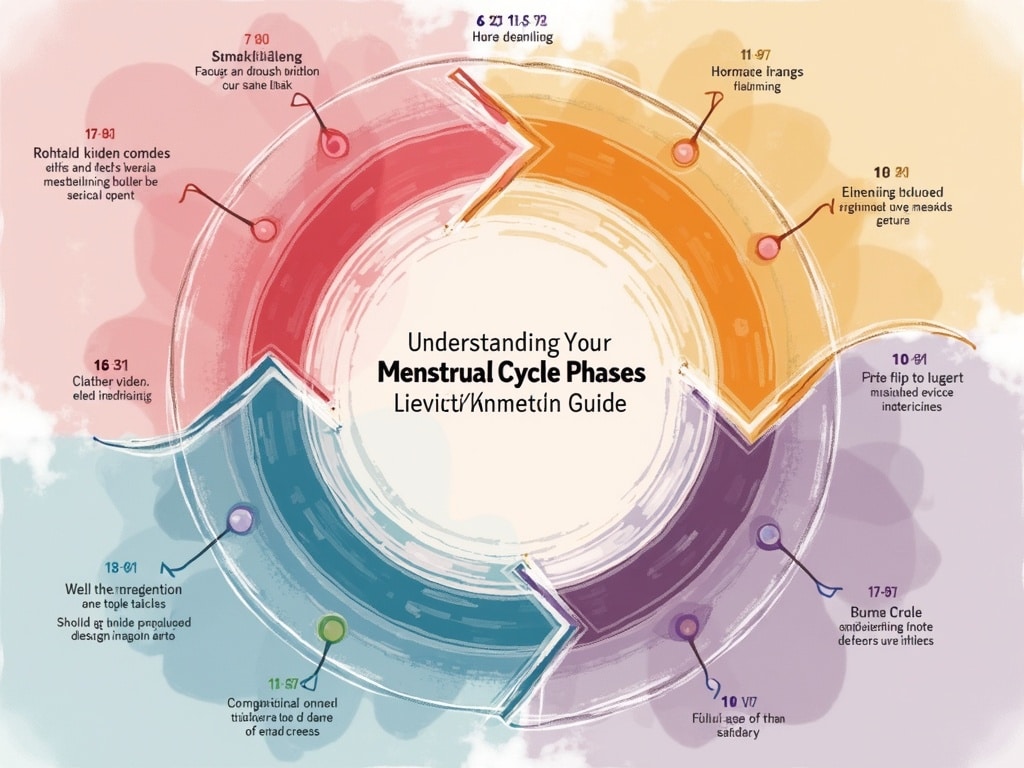Understanding Your Menstrual Cycle Phases: A Comprehensive Guide
Imagine your body as a finely tuned orchestra, with hormones conducting a symphony of changes each month. This intricate dance is your menstrual cycle, a complex process that affects everything from your mood to your energy levels. Understanding your menstrual cycle phases isn't just about knowing when to expect your period; it's about unlocking a deeper understanding of your own body and harnessing its natural rhythms to optimize your health and well-being. This guide will walk you through each phase, revealing the hormonal shifts and how they impact you, empowering you to live in harmony with your cycle.
The Menstrual Cycle: More Than Just Your Period
The menstrual cycle is a recurring sequence of events in women of reproductive age, typically lasting between 21 and 35 days. While the most obvious sign is menstruation (your period), it's just one phase of a continuous cycle driven by hormonal fluctuations. These hormones, primarily estrogen and progesterone, orchestrate changes in the ovaries and uterus, preparing the body for potential pregnancy. When pregnancy doesn't occur, hormone levels decline, triggering menstruation, and the cycle begins anew.
Why Understanding Your Cycle Matters
Beyond family planning, understanding your menstrual cycle phases offers a wealth of benefits:
- Enhanced Self-Awareness: Recognizing the patterns in your mood, energy, and physical sensations allows you to anticipate and manage your body's needs more effectively.
- Improved Health: Tracking your cycle can help identify irregularities, such as missed periods or unusually heavy bleeding, which could indicate underlying health conditions.
- Optimized Lifestyle: By understanding the hormonal influences on your body, you can tailor your diet, exercise, and activities to align with your cycle phases.
- Better Communication with Healthcare Providers: Detailed cycle tracking provides valuable information for your doctor, aiding in diagnosis and treatment of reproductive health issues.
Phase 1: Menstruation (Days 1-5) – The Shedding Phase
Menstruation, the start of your cycle, is marked by the shedding of the uterine lining (endometrium). This occurs when the egg from the previous cycle wasn't fertilized, causing a drop in estrogen and progesterone levels.
Hormonal Activity
Estrogen and progesterone are at their lowest levels during menstruation. This hormonal dip can contribute to various symptoms, including:
- Cramps: Uterine contractions help expel the uterine lining, causing abdominal pain.
- Fatigue: Low hormone levels and blood loss can lead to tiredness and decreased energy.
- Mood Swings: Hormonal fluctuations can affect neurotransmitters in the brain, influencing mood.
- Bloating: Changes in hormone levels can cause water retention and bloating.
Self-Care Tips for Menstruation
During menstruation, prioritize self-care to manage symptoms and support your body:
- Rest and Relaxation: Get adequate sleep and engage in relaxing activities like reading, taking a warm bath, or gentle stretching.
- Hydration: Drink plenty of water to stay hydrated and reduce bloating.
- Nutritious Foods: Consume iron-rich foods like leafy greens, beans, and lean meats to replenish iron levels.
- Gentle Exercise: Light activities like walking or yoga can help alleviate cramps and improve mood.
- Pain Relief: Over-the-counter pain relievers like ibuprofen or naproxen can help manage cramps and discomfort.
Phase 2: The Follicular Phase (Days 6-14) – Building Up
The follicular phase overlaps with menstruation and extends until ovulation. During this phase, the ovaries prepare an egg for release.
Hormonal Activity
Follicle-stimulating hormone (FSH) stimulates the growth of follicles in the ovaries, each containing an immature egg. As the follicles develop, they produce estrogen. Estrogen levels gradually rise throughout the follicular phase, leading to:
- Increased Energy: Rising estrogen levels boost energy and improve mood.
- Improved Cognitive Function: Estrogen enhances cognitive function, making it easier to concentrate and focus.
- Enhanced Libido: Estrogen can increase sexual desire.
- Thickening of the Uterine Lining: Estrogen stimulates the growth of the endometrium, preparing it for potential implantation of a fertilized egg.
Supporting the Follicular Phase
Nourish your body during the follicular phase to support optimal hormone production and energy levels:
- Focus on nutrient-dense foods: Incorporate plenty of fruits, vegetables, and whole grains into your diet.
- Prioritize protein intake: Consume lean protein sources like chicken, fish, and beans to support energy levels and muscle repair.
- Consider incorporating seed cycling: Some believe that consuming flax and pumpkin seeds during this phase can support estrogen production.

Phase 3: Ovulation (Around Day 14) – The Release
Ovulation is the release of a mature egg from the ovary. It typically occurs around the midpoint of your cycle, but the exact timing can vary.
Hormonal Activity
A surge in luteinizing hormone (LH) triggers ovulation. The dominant follicle ruptures, releasing the egg into the fallopian tube. Estrogen levels reach their peak just before ovulation.
Signs of Ovulation
Several signs can indicate that ovulation is occurring:
- Rising Body Temperature: Basal body temperature (BBT) usually increases slightly (0.5-1 degree Fahrenheit) after ovulation.
- Cervical Mucus Changes: Cervical mucus becomes clear, slippery, and stretchy, resembling egg whites.
- Ovulation Pain (Mittelschmerz): Some women experience mild pain or cramping on one side of the lower abdomen.
- Increased Libido: Heightened sexual desire is common around ovulation.
Maximizing Fertility During Ovulation
If you're trying to conceive, ovulation is the most fertile time of your cycle. To maximize your chances of getting pregnant:
- Time Intercourse: Have intercourse in the days leading up to and on the day of ovulation.
- Use Ovulation Predictor Kits: These kits detect the LH surge, indicating that ovulation is imminent.
- Track Your Cycle: Monitor your BBT, cervical mucus, and other signs of ovulation to pinpoint your fertile window.
Phase 4: The Luteal Phase (Days 15-28) – Preparing for Pregnancy
The luteal phase begins after ovulation and lasts until the start of your next period. During this phase, the body prepares for potential pregnancy.
Hormonal Activity
After ovulation, the ruptured follicle transforms into the corpus luteum, which produces progesterone and estrogen. Progesterone levels rise significantly during the luteal phase, leading to:
- Thickening of the Uterine Lining: Progesterone further thickens the endometrium, making it receptive to implantation of a fertilized egg.
- Increased Body Temperature: Progesterone maintains a higher BBT throughout the luteal phase.
- Possible PMS Symptoms: As progesterone and estrogen levels decline towards the end of the luteal phase, some women experience premenstrual syndrome (PMS) symptoms.
If fertilization occurs, the corpus luteum continues to produce progesterone to support the pregnancy until the placenta takes over. If fertilization doesn't occur, the corpus luteum degenerates, causing a drop in hormone levels and triggering menstruation.
Managing the Luteal Phase and PMS
The luteal phase can be challenging for some women due to PMS symptoms. Here are some tips for managing this phase:
- Eat a Balanced Diet: Focus on whole, unprocessed foods and avoid sugary and processed snacks.
- Manage Cravings: Indulge in healthy alternatives to satisfy cravings, such as fruit for sweets or nuts for salty snacks.
- Exercise Regularly: Regular physical activity can help improve mood and reduce PMS symptoms.
- Manage Stress: Practice stress-reducing techniques like meditation, yoga, or deep breathing exercises.
- Consider Supplements: Some supplements, such as calcium, magnesium, and vitamin B6, may help alleviate PMS symptoms. Consult with your healthcare provider before taking any supplements.
Tracking Your Menstrual Cycle: Tools and Techniques
Tracking your menstrual cycle is crucial for understanding its patterns and identifying any irregularities. Here are some popular tools and techniques:
- Menstrual Cycle Tracking Apps: Numerous apps are available to track your period, symptoms, and fertility.
- Calendars and Journals: A simple calendar or journal can be effective for recording your period start and end dates, symptoms, and other relevant information.
- Basal Body Temperature (BBT) Tracking: Measuring your BBT each morning before getting out of bed can help identify ovulation.
- Cervical Mucus Monitoring: Observing changes in your cervical mucus can provide insights into your fertility.
When to Seek Medical Advice
While some cycle variations are normal, it's important to consult with a healthcare provider if you experience any of the following:
- Missed Periods: Missing three or more periods in a row.
- Irregular Periods: Periods that are significantly shorter or longer than usual.
- Heavy Bleeding: Bleeding that soaks through pads or tampons every hour for several hours.
- Severe Pain: Debilitating cramps or pelvic pain.
- Bleeding Between Periods: Spotting or bleeding between periods.
These symptoms could indicate underlying conditions such as polycystic ovary syndrome (PCOS), endometriosis, or thyroid disorders. Early diagnosis and treatment can help manage these conditions and improve your overall health.
Embrace Your Cycle, Embrace Yourself
Understanding your menstrual cycle phases is a journey of self-discovery. By tuning into your body's rhythms, you can make informed choices about your health, lifestyle, and well-being. Embrace the power of your cycle and unlock the potential for hormone harmony.

